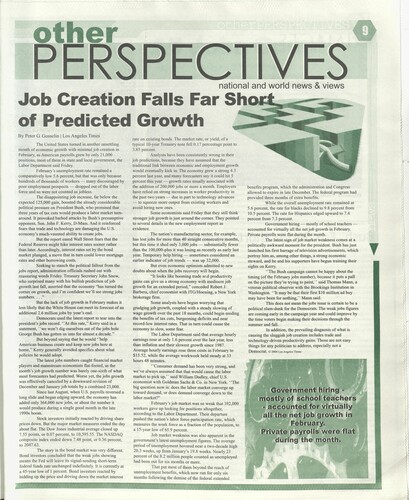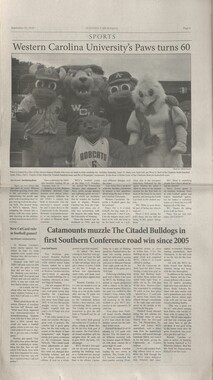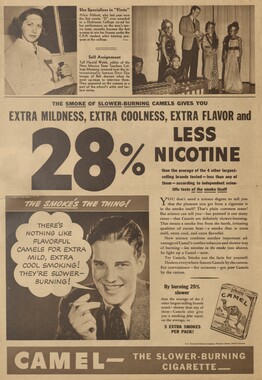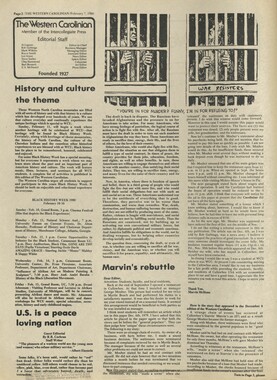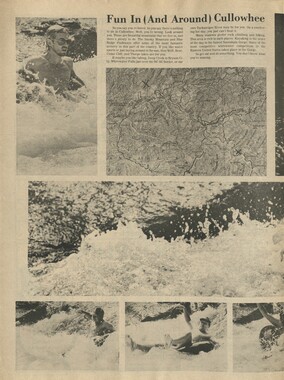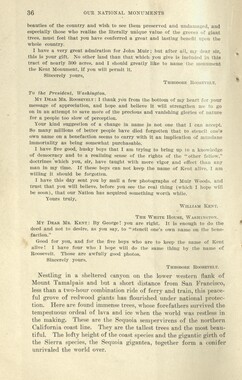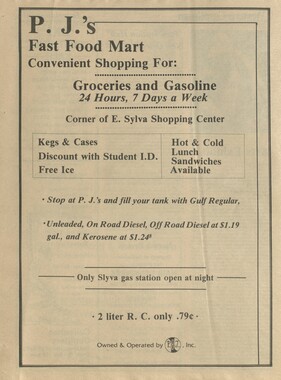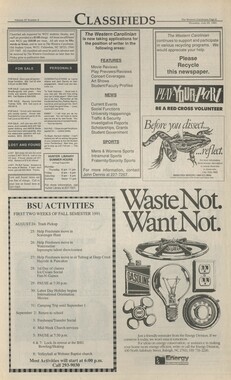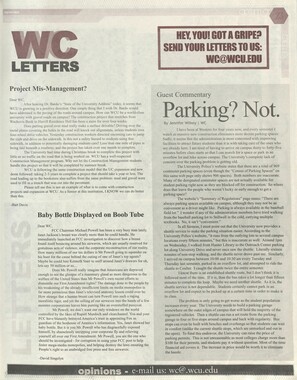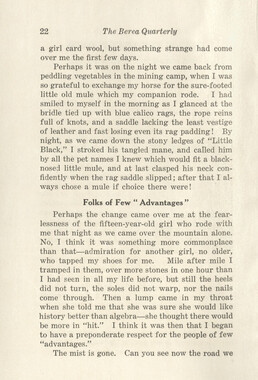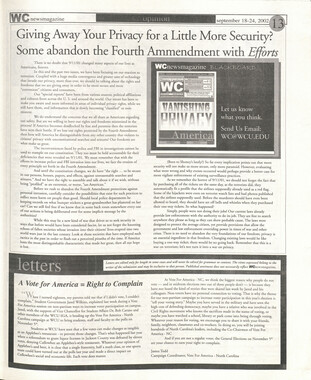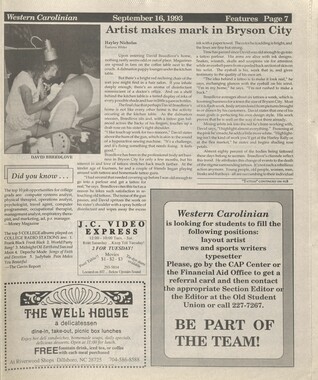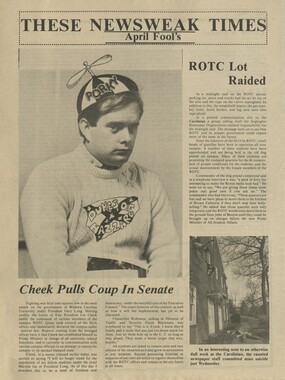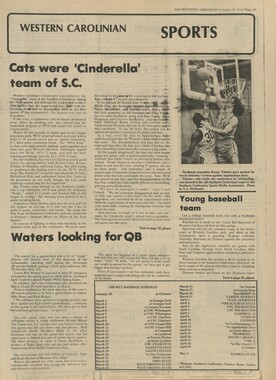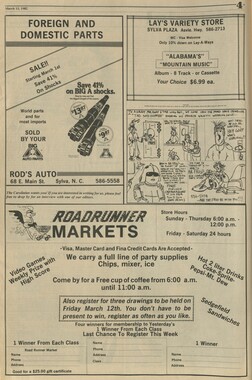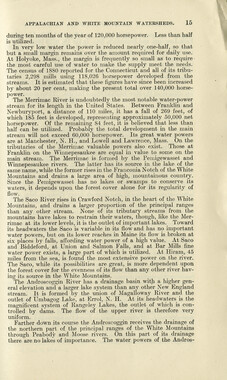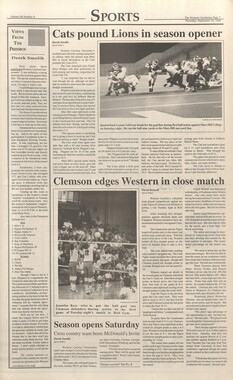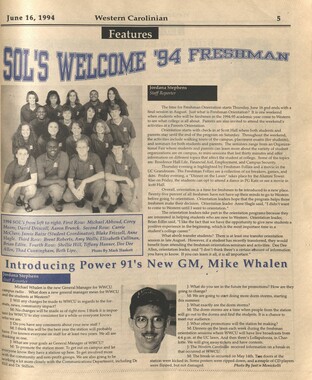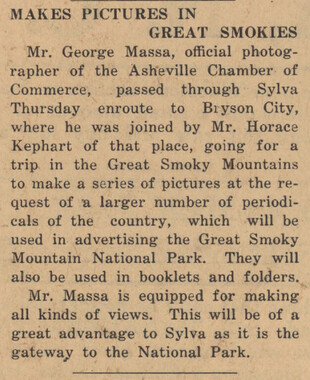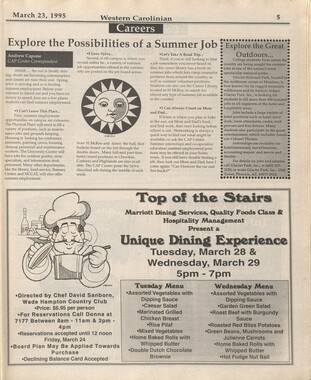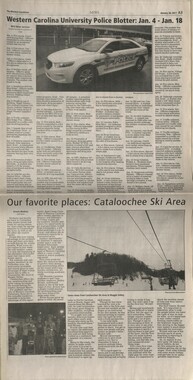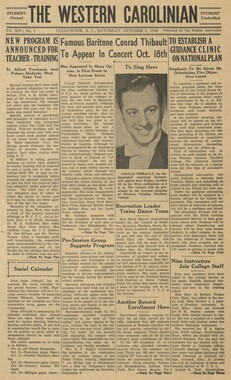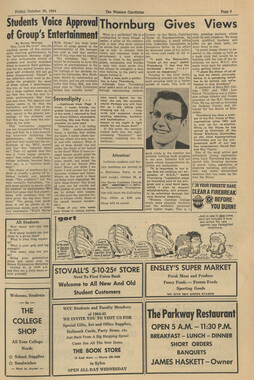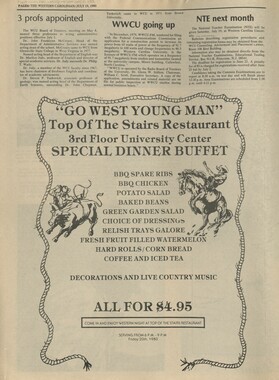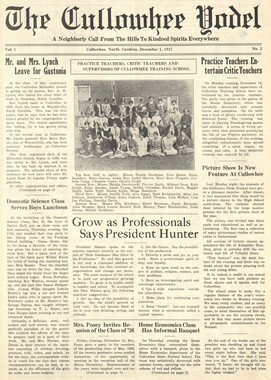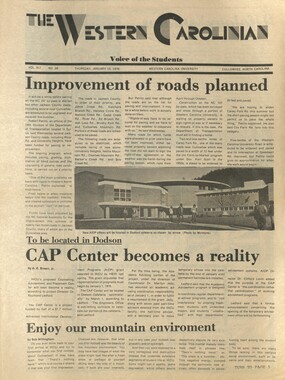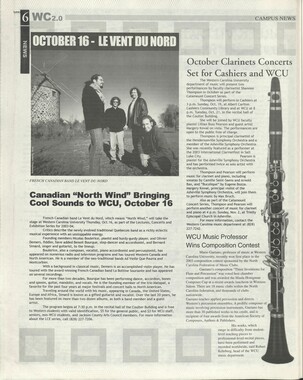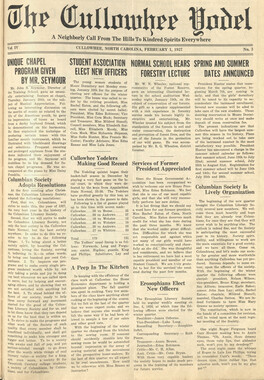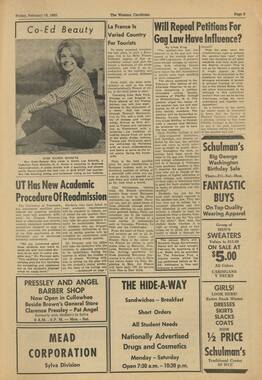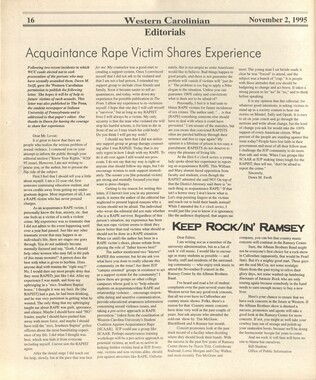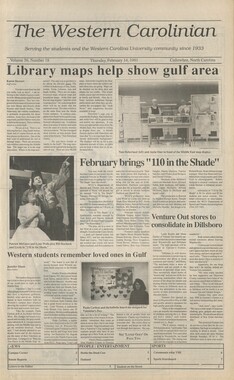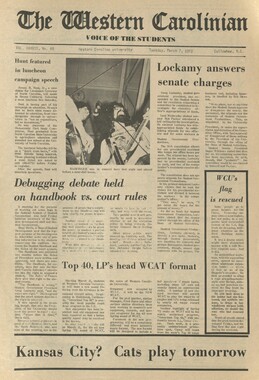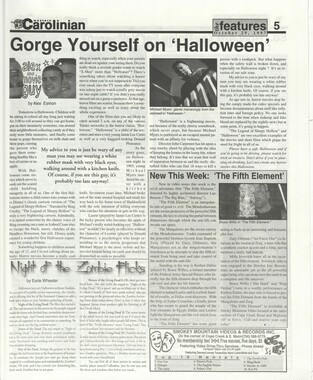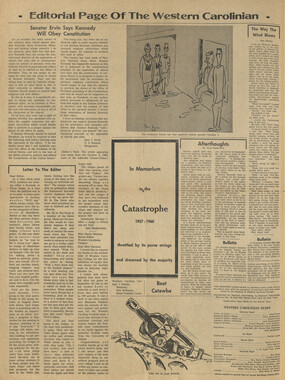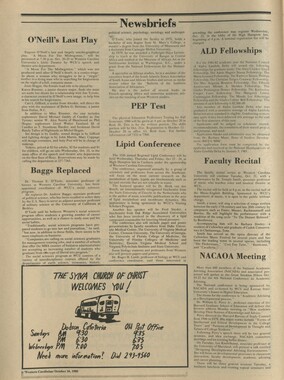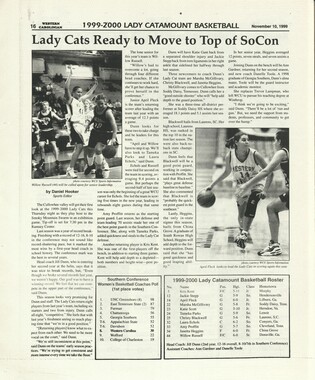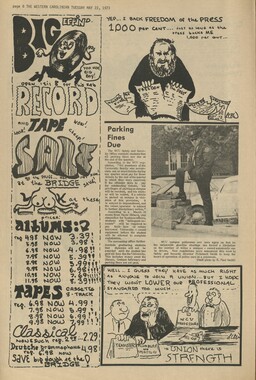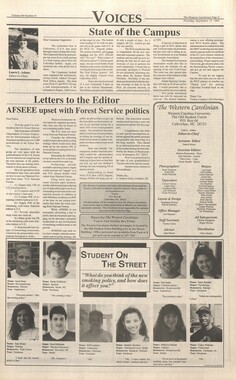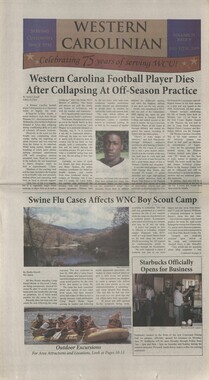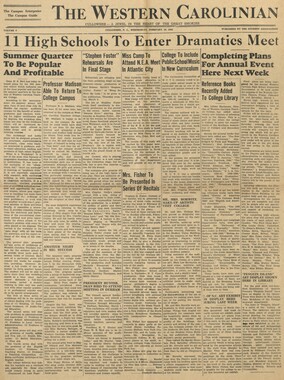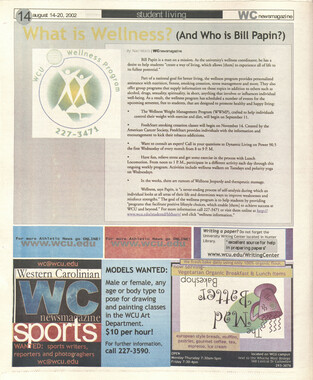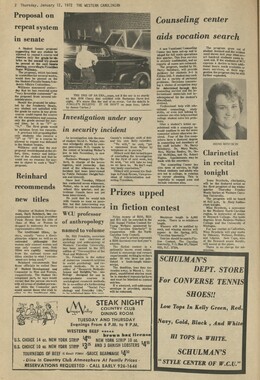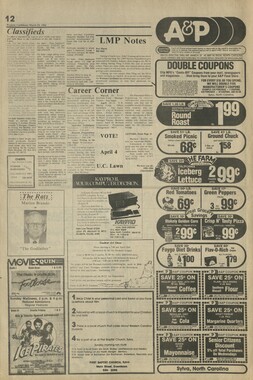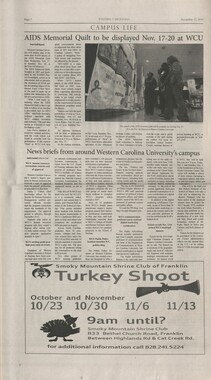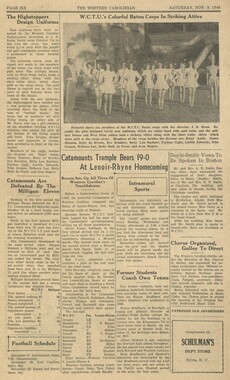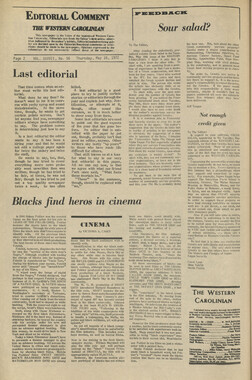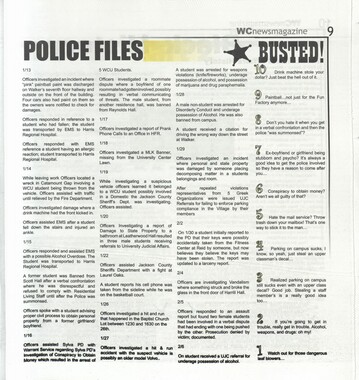Western Carolina University (21)
View all
- Canton Champion Fibre Company (2308)
- Cherokee Traditions (291)
- Civil War in Southern Appalachia (165)
- Craft Revival (1942)
- George Masa Collection (137)
- Great Smoky Mountains - A Park for America (3080)
- Highlights from Western Carolina University (422)
- Horace Kephart (973)
- Journeys Through Jackson (159)
- LGBTQIA+ Archive of Jackson County (89)
- Oral Histories of Western North Carolina (318)
- Picturing Appalachia (6617)
- Stories of Mountain Folk (413)
- Travel Western North Carolina (153)
- Western Carolina University Fine Art Museum Vitreograph Collection (129)
- Western Carolina University Herbarium (92)
- Western Carolina University: Making Memories (738)
- Western Carolina University Publications (2491)
- Western Carolina University Restricted Electronic Theses and Dissertations (146)
- Western North Carolina Regional Maps (71)
- World War II in Southern Appalachia (131)
University of North Carolina Asheville (6)
View all
- Allanstand Cottage Industries (62)
- Appalachian National Park Association (53)
- Bennett, Kelly, 1890-1974 (1463)
- Berry, Walter (76)
- Brasstown Carvers (40)
- Carver, George Washington, 1864?-1943 (26)
- Cathey, Joseph, 1803-1874 (1)
- Champion Fibre Company (233)
- Champion Paper and Fibre Company (297)
- Cherokee Indian Fair Association (16)
- Cherokee Language Program (22)
- Crowe, Amanda (40)
- Edmonston, Thomas Benton, 1842-1907 (7)
- Ensley, A. L. (Abraham Lincoln), 1865-1948 (275)
- Fromer, Irving Rhodes, 1913-1994 (70)
- George Butz (BFS 1907) (46)
- Goodrich, Frances Louisa (120)
- Grant, George Alexander, 1891-1964 (96)
- Heard, Marian Gladys (60)
- Kephart, Calvin, 1883-1969 (15)
- Kephart, Horace, 1862-1931 (313)
- Kephart, Laura, 1862-1954 (67)
- Laney, Gideon Thomas, 1889-1976 (439)
- Masa, George, 1881-1933 (61)
- McElhinney, William Julian, 1896-1953 (44)
- Niggli, Josephina, 1910-1983 (10)
- North Carolina Park Commission (105)
- Osborne, Kezia Stradley (9)
- Owens, Samuel Robert, 1918-1995 (11)
- Penland Weavers and Potters (36)
- Roberts, Vivienne (15)
- Roth, Albert, 1890-1974 (142)
- Schenck, Carl Alwin, 1868-1955 (1)
- Sherrill's Photography Studio (2565)
- Southern Highland Handicraft Guild (127)
- Southern Highlanders, Inc. (71)
- Stalcup, Jesse Bryson (46)
- Stearns, I. K. (213)
- Thompson, James Edward, 1880-1976 (226)
- United States. Indian Arts and Crafts Board (130)
- USFS (683)
- Vance, Zebulon Baird, 1830-1894 (1)
- Weaver, Zebulon, 1872-1948 (58)
- Western Carolina College (230)
- Western Carolina Teachers College (282)
- Western Carolina University (2008)
- Western Carolina University. Mountain Heritage Center (18)
- Whitman, Walt, 1819-1892 (10)
- Wilburn, Hiram Coleman, 1880-1967 (73)
- Williams, Isadora (3)
- Cain, Doreyl Ammons (0)
- Crittenden, Lorraine (0)
- Rhodes, Judy (0)
- Smith, Edward Clark (0)
- Appalachian Region, Southern (3032)
- Asheville (N.C.) (1945)
- Avery County (N.C.) (26)
- Blount County (Tenn.) (195)
- Buncombe County (N.C.) (1680)
- Cherokee County (N.C.) (283)
- Clay County (N.C.) (556)
- Graham County (N.C.) (238)
- Great Smoky Mountains National Park (N.C. and Tenn.) (525)
- Haywood County (N.C.) (3573)
- Henderson County (N.C.) (70)
- Jackson County (N.C.) (4925)
- Knox County (Tenn.) (35)
- Knoxville (Tenn.) (13)
- Lake Santeetlah (N.C.) (10)
- Macon County (N.C.) (421)
- Madison County (N.C.) (216)
- McDowell County (N.C.) (39)
- Mitchell County (N.C.) (135)
- Polk County (N.C.) (35)
- Qualla Boundary (982)
- Rutherford County (N.C.) (78)
- Swain County (N.C.) (2185)
- Transylvania County (N.C.) (270)
- Watauga County (N.C.) (12)
- Waynesville (N.C.) (86)
- Yancey County (N.C.) (72)
- Aerial Photographs (3)
- Aerial Views (60)
- Albums (books) (4)
- Articles (1)
- Artifacts (object Genre) (228)
- Bibliographies (1)
- Biography (general Genre) (2)
- Cards (information Artifacts) (38)
- Clippings (information Artifacts) (192)
- Copybooks (instructional Materials) (3)
- Crafts (art Genres) (622)
- Depictions (visual Works) (21)
- Design Drawings (1)
- Digital Moving Image Formats (2)
- Drawings (visual Works) (185)
- Envelopes (101)
- Exhibitions (events) (1)
- Facsimiles (reproductions) (1)
- Fiction (general Genre) (4)
- Financial Records (12)
- Fliers (printed Matter) (67)
- Glass Plate Negatives (381)
- Guidebooks (2)
- Internegatives (10)
- Interviews (823)
- Land Surveys (102)
- Letters (correspondence) (1045)
- Manuscripts (documents) (618)
- Maps (documents) (177)
- Memorandums (25)
- Minutes (administrative Records) (59)
- Negatives (photographs) (6090)
- Newsletters (1290)
- Newspapers (2)
- Notebooks (8)
- Occupation Currency (1)
- Paintings (visual Works) (1)
- Pen And Ink Drawings (1)
- Periodicals (194)
- Personal Narratives (10)
- Photographs (12977)
- Plans (maps) (1)
- Poetry (6)
- Portraits (4568)
- Postcards (329)
- Programs (documents) (181)
- Publications (documents) (2444)
- Questionnaires (65)
- Relief Prints (26)
- Sayings (literary Genre) (1)
- Scrapbooks (282)
- Sheet Music (2)
- Slides (photographs) (402)
- Songs (musical Compositions) (2)
- Sound Recordings (802)
- Specimens (92)
- Speeches (documents) (18)
- Tintypes (photographs) (8)
- Transcripts (329)
- Text Messages (0)
- A.L. Ensley Collection (275)
- Appalachian Industrial School Records (7)
- Appalachian National Park Association Records (336)
- Axley-Meroney Collection (2)
- Bayard Wootten Photograph Collection (20)
- Bethel Rural Community Organization Collection (7)
- Blumer Collection (5)
- C.W. Slagle Collection (20)
- Canton Area Historical Museum (2110)
- Carlos C. Campbell Collection (462)
- Cataloochee History Project (64)
- Cherokee Studies Collection (4)
- Daisy Dame Photograph Album (5)
- Daniel Boone VI Collection (1)
- Doris Ulmann Photograph Collection (112)
- Elizabeth H. Lasley Collection (1)
- Elizabeth Woolworth Szold Fleharty Collection (4)
- Frank Fry Collection (95)
- George Masa Collection (173)
- Gideon Laney Collection (452)
- Hazel Scarborough Collection (2)
- Hiram C. Wilburn Papers (28)
- Historic Photographs Collection (236)
- Horace Kephart Collection (861)
- Humbard Collection (33)
- Hunter and Weaver Families Collection (1)
- I. D. Blumenthal Collection (4)
- Isadora Williams Collection (4)
- Jesse Bryson Stalcup Collection (47)
- Jim Thompson Collection (224)
- John B. Battle Collection (7)
- John C. Campbell Folk School Records (80)
- John Parris Collection (6)
- Judaculla Rock project (2)
- Kelly Bennett Collection (1482)
- Love Family Papers (11)
- Major Wiley Parris Civil War Letters (3)
- Map Collection (12)
- McFee-Misemer Civil War Letters (34)
- Mountain Heritage Center Collection (4)
- Norburn - Robertson - Thomson Families Collection (44)
- Pauline Hood Collection (7)
- Pre-Guild Collection (2)
- Qualla Arts and Crafts Mutual Collection (12)
- R.A. Romanes Collection (681)
- Rosser H. Taylor Collection (1)
- Samuel Robert Owens Collection (94)
- Sara Madison Collection (144)
- Sherrill Studio Photo Collection (2558)
- Smoky Mountains Hiking Club Collection (616)
- Stories of Mountain Folk - Radio Programs (374)
- The Reporter, Western Carolina University (510)
- Venoy and Elizabeth Reed Collection (16)
- WCU Gender and Sexuality Oral History Project (36)
- WCU Mountain Heritage Center Oral Histories (25)
- WCU Oral History Collection - Mountain People, Mountain Lives (71)
- WCU Students Newspapers Collection (1923)
- Western North Carolina Tomorrow Black Oral History Project (69)
- William Williams Stringfield Collection (2)
- Zebulon Weaver Collection (109)
- African Americans (390)
- Appalachian Trail (35)
- Artisans (521)
- Cherokee art (84)
- Cherokee artists -- North Carolina (10)
- Cherokee language (21)
- Cherokee pottery (101)
- Cherokee women (208)
- Church buildings (190)
- Civilian Conservation Corps (U.S.) (111)
- College student newspapers and periodicals (2012)
- Dams (108)
- Dance (1023)
- Education (222)
- Floods (63)
- Folk music (1015)
- Forced removal, 1813-1903 (2)
- Forest conservation (220)
- Forests and forestry (1198)
- Gender nonconformity (4)
- Great Smoky Mountains National Park (N.C. and Tenn.) (181)
- Hunting (47)
- Landscape photography (25)
- Logging (122)
- Maps (83)
- Mines and mineral resources (9)
- North Carolina -- Maps (18)
- Paper industry (38)
- Postcards (255)
- Pottery (135)
- Railroad trains (72)
- Rural electrification -- North Carolina, Western (3)
- School integration -- Southern States (2)
- Segregation -- North Carolina, Western (5)
- Slavery (5)
- Sports (452)
- Storytelling (243)
- Waterfalls -- Great Smoky Mountains (N.C. and Tenn.) (66)
- Weaving -- Appalachian Region, Southern (280)
- Wood-carving -- Appalachian Region, Southern (328)
- World War, 1939-1945 (173)
Western Carolinian Volume 68 Number 09
Item
Item’s are ‘child’ level descriptions to ‘parent’ objects, (e.g. one page of a whole book).
-
-
i eens By Peter G. Gosselin | Los Angeles Times The United States turned in another unsettling month of economic growth with minimal job creation in February, as American payrolls grew by only 21,000 positions, most of them in state and local government, the Labor Department said Friday. Februarys unemployment rate remained a comparatively low 5.6 percent, but that was only because hundreds of thousands of workers many discouraged by poor employment prospects dropped out of the labor force and so were not counted as jobless. The disappointing job increase, far below the expected 125,000 gain, boosted the already considerable political pressure on President Bush, who promised that three years of tax cuts would produce a labor market turn- around. It provoked barbed attacks by Bushs presumptive opponent, Sen. John F. Kerry, D-Mass. And it reinforced fears that trade and technology are damaging the U.S. economys much-vaunted ability to create jobs. But the report eased Wall Street fears that the Federal Reserve might hike interest rates sooner rather than later. Accordingly, interest rates set by the bond market plunged, a move that in turn could lower mortgage rates and other borrowing costs. Seeking to stanch the political fallout from the jobs report, administration officials rushed out with reassuring words Friday. Treasury Secretary John Snow, who surprised many with his bullish prediction of job growth last fall, asserted that the economy has turned the corner on growth, and Im confident well see strong jobs numbers... . But the lack of job growth in February makes it less likely that the White House can meet its forecast of an additional 2.6 million jobs by years end. Democrats used the latest report to tear into the presidents jobs record. At this rate, Kerry said ina statement, we wont dig ourselves out of the jobs hole George Bush has gotten us into for almost a decade. But beyond saying that he would help American business create and keep new jobs here at home, Kerry generally avoided specifics about what policies he would adopt. The latest jobs numbers caught financial market players and mainstream economists flat-footed, as the months job growth number was barely one-sixth of what most forecasters had predicted. Worse yet, the jobs growth was effectively canceled by a downward revision of December and January job totals by a combined 23,000. Since last August, when U.S. payrolls reversed a long slide and began edging upward, the economy has added only 364,000 new jobs, or about the number it would produce during a single good month in the late 1990s boom. Stock investors initially reacted by driving share prices down. But the major market measures ended the day about flat. The Dow Jones industrial average closed up 7.55 points, or 0.07 percent, to 10,595.55. The NASDAQ composite index ended down 7.48 point, or 0.36 percent, to 2047.63. The story in the bond market was very different. Bond investors concluded that the weak jobs showing means the Fed will leave its signal-sending short-term federal funds rate unchanged indefinitely. It is currently at a 45-year low of 1 percent. Bond investors reacted by bidding up the price and driving down the market interest rate on existing bonds. The market rate, or yield, of a typical 10-year Treasury note fell 0.17 percentage point to 3.85 percent. Analysts have been consistently wrong in their job predictions, because they have assumed that the traditional link between economic and employment growth would eventually kick in: The economy grew a strong 4.3 percent last year, and many forecasters say it could hit 5 percent this year growth rates usually associated with the addition of 200,000 jobs or more a month. Employers have relied on strong increases in worker productivity in the past two years due in part to technology advances to squeeze more output from existing workers and avoid hiring new ones. Some economists said Friday that they still think stronger job growth is just around the corner. They pointed to several details in the new employment report as evidence. The nations manufacturing sector, for example, has lost jobs for more than 40 straight consecutive months, but this time it shed only 3,000 jobs substantially fewer than the 100,000-plus it was losing as recently as early last year. Temporary help hiring sometimes considered an earlier indicator of job trends was up 32,000. . But even economic optimists admitted to new doubts about when the jobs recovery will begin. | Tt looks like booming trade arid productivity gains can give us a strong economy with mediocre job growth for an extended period, conceded Robert J. Barbera, chief economist with ITG/Hoening, a New York brokerage firm. Some analysts have begun worrying that grudging job growth, coupled with a steady slowing of wage growth over the past 18 months, could begin eroding the benefits of tax cuts, burgeoning deficits and near record-low interest rates. That in turn could cause the economy to slow, some fear. The Labor Department said that average hourly earnings rose at only 1.6 percent over the last year, less -than inflation and their slowest growth since 1987. Average hourly earnings rose three cents in February to $15.52, while the average workweek held steady at 33 hours 48 minutes. Consumer demand has been very strong, and weve always assumed that that would cause the labor market to pick up, said William Dudley, chief U.S. economist with Goldman Sachs & Co. in New York. The big question now is: does the labor market converge up toward demand, or does demand converge down to the labor market? Februarys job market was so weak that 392,000 workers gave up looking for positions altogether, according to the Labor Department. Their departure pushed the nations labor force participation rate, which measures the work force as a fraction of the population, to a 15-year low of 65.9 percent. Job market weakness was also apparent in the governments latest unemployment figures. The average period of unemployment hovered near a two-decade high 20.3 weeks, up from Januarys 19.8 weeks. Nearly 23 percent of the 8.2 million people counted as unemployed had been out for six months or more. That put most of them beyond the reach of unemployment benefits, which now run for only six months following the demise of the federal extended national and world news & views Job Creation Falls Far Shc of Predicted Growth SDL OL III ODOR DOI PD RES AAA gpg RS benefits program, which the administration and Congress allowed to expire in late December. The federal program had provided three months of extra benefits. While the overall unemployment rate remained at 5.6 percent, the rate for blacks declined to 9.8 percent from 10.5 percent. The rate for Hispanics edged upward to 7.4 percent from 7.3 percent. Government hiring mostly of school teachers accounted for virtually all the net job growth in February. Private payrolls were flat during the month. The latest sign of job market weakness comes at a politically awkward moment for the president. Bush has just launched his first barrage of television advertisements, which portray him as, among other things, a strong economic steward, and he and his supporters have begun training their sights on Kerry. The Bush campaign cannot be happy about the timing (of the February jobs number), because it puts a pall on the picture theyre trying to paint, said Thomas Mann, a veteran political observer with the Brookings Institution in Washington. It may be that their first $10 million ad buy may have been for nothing, Mann said. This does not mean the jobs issue is certain to be a political slam-dunk for the Democrats. The weak jobs figures are coming early in the campaign year and could improve by the time voters begin making their decisions through the summer and fall. In addition, the prevailing diagnosis of what is causing the sluggish job creation includes trade and technology-driven productivity gains. Those are not easy things for any politician to address, especially not a Democrat. 2004 Los Angeles Times Puts OPS AAALAC PPP ALAA AP AAAS
Object
Object’s are ‘parent’ level descriptions to ‘children’ items, (e.g. a book with pages).
-
The Western Carolinian is Western Carolina University's student-run newspaper. The paper was published as the Cullowhee Yodel from 1924 to 1931 before changing its name to The Western Carolinian in 1933.
-

